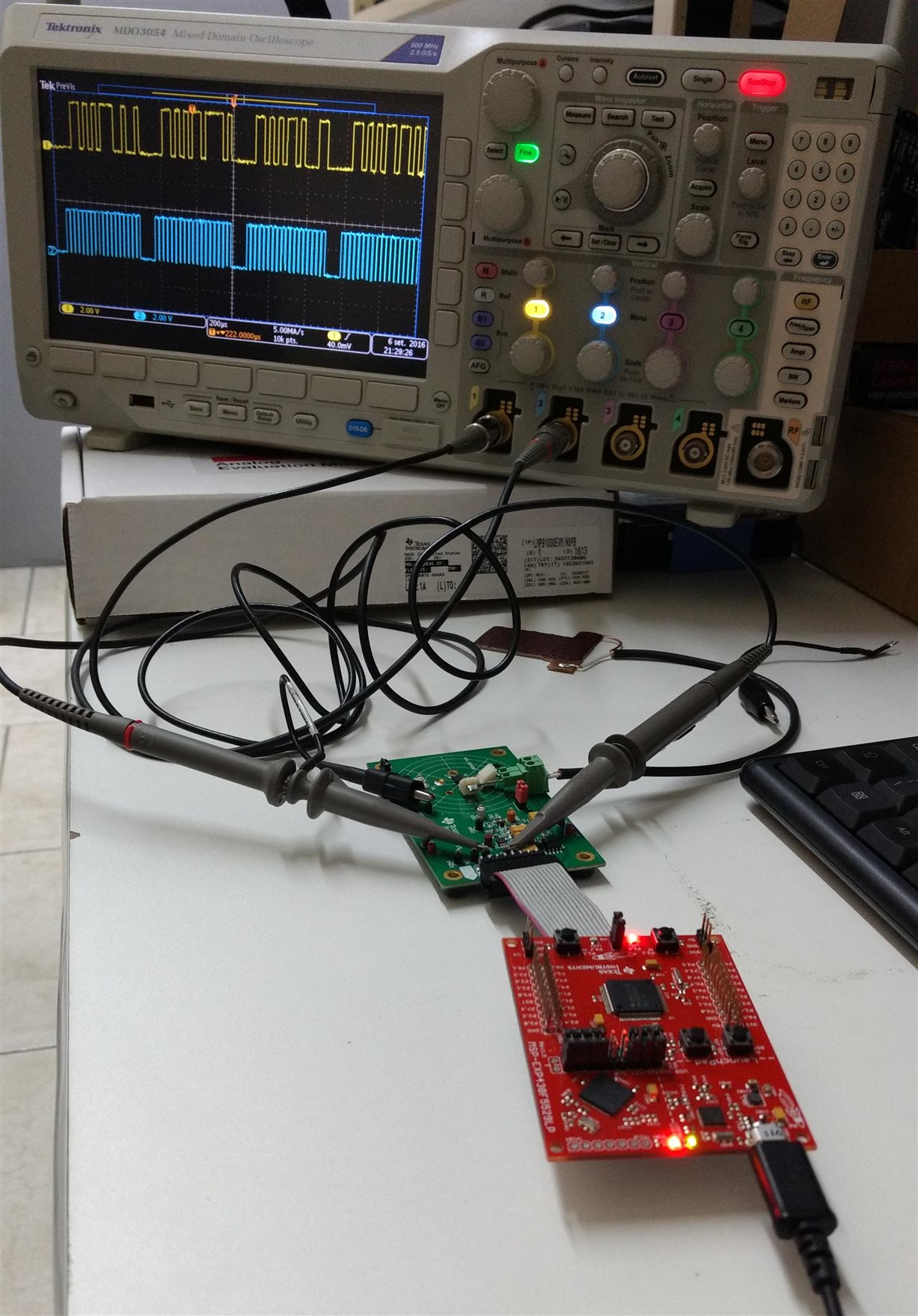Good morning everyone!
I would like to use LMP91000EVM for measuring signals of a capacitive cell.
How can I adapt the JTAG target connector (http://www.ti.com/tool/MSP-FET430UIF) to the SPIO-GPSI16 connector (http://www.ti.com/tool/LMP91000EVM)?
I need to connect to LMP91000EVM card into a USB port of a PC to use the interface Sensor AFE for LMP91000EVM without an SPIO-4.
Figure 1 - MSP-FET430UIF and LMP91000EVM.
Figure 2 - JTAG target connector pins and SPIO-GPSI16 connector pins.
Figure 3 - Sensor AFE screen.
I checked the Application Note http://www.ti.com/lit/an/snaa138c/snaa138c.pdf with use of MSP-FET430UIF, but there are no more specific information in this document.
Could anyone help?
I checked on the integrated circuit page LMP91000 (http://www.ti.com/product/LMP91000/toolssoftware) that there is a link (http://www.ti.com/lit/sw/snac032/snac032.zip) providing 4 examples, and the code example demo-app04.
The main.c uses 6-pin MSP430F5528 for communication:
// MSP430F5528
// --------------------------
// /|\ | XIN|-
// | | |
// -- |RST XOUT |-
// | |
// | P3.0/UCB0SDA|<--> SDA....................................................(to pin 11 in SPI-GPSI16)
// | P3.1/UCB0SCL|--> SCL........................................................(to pin 12 in SPI-GPSI16)
// | |
// | P2.6|<-- MENB....................................................(to pin 8 in SPI-GPSI16)
// | |
// | P4.5/UCA1SOMI|<-- ADC16S626_SDO...............................(to pin 5 in SPI-GPSI16)
// | P4.0/UCA1CLK|--> ADC16S626_CLK................................(to pin 3 in SPI-GPSI16)
// | P2.4|--> ADC16S626_CSB................................(to pin 1 in SPI-GPSI16)
My doubt in MSP-FET430UIF is:
What are the pins to be used in JTAG target connector? 10, 12, 14 and...?
Regards,
Luiz.

















